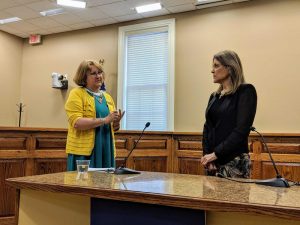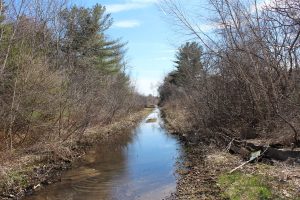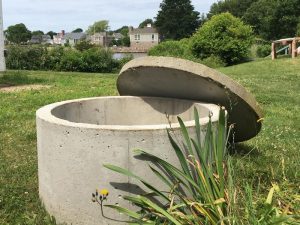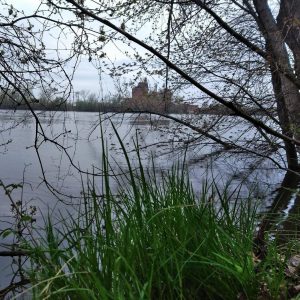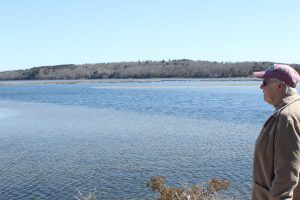Stories
In Housatonic River Deal With GE, Towns Agree To Toxic Waste Dump In The Berkshires
After more than a year and a half of mediation, the U.S. EPA New England office, General Electric and cities and towns along the Housatonic River have agreed to dispose some toxic PCB sediment at a site near the Lee-Lenox line, about 1,000 feet from the river. But not all participants in the mediated settlement…
Read MoreArtificial Intelligence Could Help Scientists Predict Where And When Toxic Algae Will Bloom
Climate-driven change in the Gulf of Maine is raising new threats that “red tides” will become more frequent and prolonged. But at the same time, powerful new data collection techniques and artificial intelligence are providing more precise ways to predict where and when toxic algae will bloom. One of those new machine learning prediction models…
Read MoreOn The Presidential Campaign Trail, New Hampshire PFAS Activists Give—And Get—Attention
New Hampshire is at the forefront of a growing debate over PFAS chemical contamination in drinking water. And many of the Democrats campaigning to win the state’s first-in-the-nation presidential primary are taking notice.
Read MoreAll The Players But Massachusetts Join Housatonic River Cleanup Mediation
The U.S. Environmental Protection Agency and General Electric Co. are funding a new approach to negotiating an agreement on the cleanup of the Housatonic River. Just last week, many of the stakeholders met with an independent mediator. But one key player is choosing not to participate.
Read MoreAt Coakley Landfill Site, Government Assurances Meet Public Fear
The Coakley Landfill on New Hampshire’s Seacoast is back in the headlines, more than 30 years after it became a Superfund site. Neighbors are again worried the site could be poisoning their drinking water, after a rash of childhood cancer cases nearby and the discovery of dangerously high levels of PFAS chemicals at the landfill.
Read MoreHurricanes can push extra sea water toward the shore. And that water, called storm surge, can flood streets and basements. But scientists at the University of Rhode Island are wondering, how can that water impact coastal drinking wells?
Read MoreA very old sewer system is still in use at about 800 wastewater treatment plants in the U.S., including along the Connecticut River. It’s called “combined sewer overflow,” or CSO. What overflows into waterways is a mix of storm water, street runoff and raw sewage.
Read MoreDevils, Damselflies, And History: A Trip Down Connecticut’s ‘Wild And Scenic’ Eightmile River
The trees are dense, the path is narrow, and everywhere, there’s the sound of water. I hike to a clearing and hear a waterfall dashing against rocks below, sending clouds of mist wafting over my trail. This is my first stop on a journey down New England’s southernmost “wild and scenic” river, the Eightmile.
Read MoreSouth County Beach Community In Rhode Island Continues To Retreat As Ocean Creeps Inland
The cottages in these rows are in a prime oceanfront location, but they won’t be here for long. Within the next two years, they will be moved about a quarter mile inland, because the ocean is creeping in closer and closer every year.
Read MoreSalt marshes are coastal wetlands that span up and down the East Coast. They help protect coastal properties from strong waves during storms, absorb carbon from the atmosphere, and serve as nurseries for fish and critical habitat for birds, such as ospreys. However, residents and fishermen started noticing these marsh islands, especially in the west branch of the river, rapidly disappearing.
Read More
